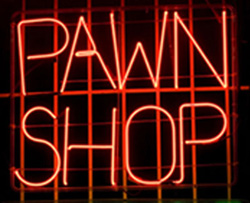 Having spent many years on the Metropolitan Police Department in Washington, DC, assigned to various duties, I’d have to say my stretch as a detective assigned to the Career Criminal Unit was among the best of times. Like so many criminal investigators, what attracted me most to the field was criminal behavior. Specifically, the maturation of certain defendant’s crimes and, of course, the first thing every detective has to question—the motivation behind the crime.
Having spent many years on the Metropolitan Police Department in Washington, DC, assigned to various duties, I’d have to say my stretch as a detective assigned to the Career Criminal Unit was among the best of times. Like so many criminal investigators, what attracted me most to the field was criminal behavior. Specifically, the maturation of certain defendant’s crimes and, of course, the first thing every detective has to question—the motivation behind the crime.
Not even five years on the department and I was detailed to the Third District’s detective office. Not something I asked for, but when it was offered, I jumped on it. It was the beginning of summer, 1998 and home burglaries and street robberies were through the roof. My job was to analyze patterns, identify possible suspects and work with the Violent Crime detectives to make arrests, ultimately lower the stats, and make the big boys happy. I focused my attention on the Adam’s Morgan area of the District. It was considered at the time to be an “up-and-coming” neighborhood. But it was a community overwhelmed with new construction, overpriced townhomes, thriving clubs and restaurants, and subsequently, an overly energetic nightlife. Unfortunately, these are the ingredients that can attract a certain criminal element.
As the weeks passed, street robberies increased, a handful of them becoming more violent. One victim in particular, a young college kid walking home from a club with a couple of his girlfriends, was approached by a suspect who displayed a gun, demanded their money, and politely asked one of the girls to take off her bracelet. Then, almost as an afterthought, the suspect removed a screwdriver from his back pant pocket and stabbed the male victim in the back, just below his shoulder. I reviewed the officer’s notes, the crime scene report and victim’s statements. No usable evidence—but, “bracelet”, I thought.

The next day, armed with an affidavit in support of a search warrant, we kicked in the suspect’s door. He was home. He was a baby-faced sixteen year old kid. Peach fuzz for a mustache. He was arrested, taken back to the Third District detective’s office. My mentor at the time, an always smiling Hispanic detective, allowed me in the box with him to interview the kid. Fortunately, we recovered other items from his home, crime mementos—certain things you just don’t keep around. So he talked. A little too easily. As if the subject was something as comfortable as football, or his favorite food.
His boys called him Black, a common street name, but one that fit him. He was dark as polished coal. His eyes were light grey though, almost like the milky-eyed dead stare you’d see on a fresh body. He told us that one day while walking around trying to find a victim to rob, he saw a girl walking toward her front door. All of a sudden, he thought, “I can have her.” So he did. Just like that. No internal debate. No fear of consequences. She was raped inside her home. We learned that when he was about eleven years old, he started busting into cars, then snatching purses by the time he was thirteen, using BB guns shortly thereafter. Working plainclothes, I met a lot of kids like Black who I’m sure once walked and talked like little kids should. I watched most of them grow up, some not. They all spent too much time watching the other boys on the corner, walking their walk and slinging dope. And talking to most of them, they all knew their time was short. Just like Black.
A few days later, we found a blurb in the Washington Post’s District Section: “Teen Pleads Guilty to Rape and Robbery”. He was facing thirty years to life. Raped two women, robbed countless others and who knows, probably had a body out there somewhere. Yes, I was a rookie then, a little too much pride, and maybe I expected something more than a tiny box buried on page four of the local section, “Teen Pleads Guilty to Rape and Robbery”. Was it for me, or for the victims? I want to say both.
David Swinson is the author of A Detailed Man.

David, I look forward to learning much from you here. Love your insight into the human condition. Sometimes that insight is hard-won, isn’t it?
Just one of many more great cop stories from your career. I look forward to reading more from you. Since we were assigned to different patrol districts out of the academy, most of my memories are from those academy days, but I do have a couple memories of you helping me on 1 case to ID a suspect on a cyber-case (if memory serves well, it was off 7th Street), and I remember going to a pawn shop with you on Columbia Rd and learning about that process. Good times and memories!